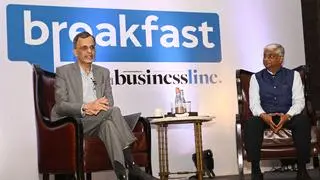Ten-odd tier-II cities, namely Bhubaneshwar, Coimbatore, Indore, Jaipur, Kochi, Lucknow, Nagpur, Surat, Thiruvananthapuram and Visakhapatnam, are seen as potential future growth drivers for real estate.
These emerging cities have been identified over and above the eight large ones that include four metros - Delhi-NCR, Mumbai, Kolkata and Chennai; and four non-metros - Bengaluru, Ahmedabad, Hyderabad and Pune.
According to Anshul Jain, Managing Director-India and South East Asia, Cushman and Wakefield, parameters include identifying a healthy traction in overall real estate development, organised retail penetration, and maturity in residential market development, talent pool, ease of living and housing affordability.
A report in this regard was released by CREDAI and property consultant major, Cushman & Wakefield.
In all, 17 cities were ranked across various parameters. “And 10 out of them hold the highest potential for growth in the foreseeable future,” he said adding that infrastructure addition has has key role in determining these new cities.
Urbanisation rate, which was around 32 per cent in 2013 is up to 36 per cent in 2023.
Jain explained, growth in Lucknow is driven by domestic market, while Kochi and Thiruvananthapuram markets are driven by services sector. Jaipur is witnessing growth from trade and services; while Bhubaneswar is driven by IT, start-ups and local businesses.
“The residential sector has also witnessed significant growth in many of these cities and they perform well on affordability parameters,” he said.
Commercial leasing
According to Jain, commercial leasing activity in July - September period was better over Jan - Mar and April- June periods; and “request for proposals (RFPs) which had slowed down following slowdown in the US markets are coming back around Q3 2023.”
“So yes, you do see some short term pick up in RFPs. In fact, Q3 demand seems better than Q1 and Q2 at the moment,” he told businessline.
But, leasing activity for 2023 will “continue to be 10-15 per cent lesser over last year” primarily because of the high base effect and “some global headwinds”.
Office leasing in India’s top seven cities rose 46 per cent to almost 39 million square feet (msf) in 2022 over the last year as return to office environment gained momentum, but stayed short of the record of 47 msf in 2019.
“More than the global headwinds, the high base effect will come into effect impacting leasing,” Jain said.
Gross leasing (pre-bookings, commitments, under construction activity) in 2022 was 70 msf, which remains a cushioning factor.
Capex cycle in US
Jain explained, capex cycle in the US is yet to pick up. However, indications are inflation and rate cycles are peaking. And over the next 12 to 18 month period, this cycle is expected to improve, thereby leading to better demand for commercial space leasing in India.
“As of now, commercial leasing activity is being driven by Indian companies, who are doing well over their US counterparts. But over the next 12-18 months, global companies including US ones would look to restart their capex cycle, come back on setting up of GCCs (global capacity centres),” he said.
(The writer is in Egypt at the invitation of CREDAI.)








Comments
Comments have to be in English, and in full sentences. They cannot be abusive or personal. Please abide by our community guidelines for posting your comments.
We have migrated to a new commenting platform. If you are already a registered user of TheHindu Businessline and logged in, you may continue to engage with our articles. If you do not have an account please register and login to post comments. Users can access their older comments by logging into their accounts on Vuukle.